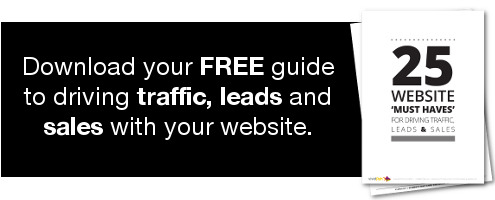7 Conversion Rate Optimisation Quick Wins

Let’s focus on why you're here: you want visitors to your site to become paying customers. There’s nothing wrong with admitting that, you’re a business after all. You’re also a brand, so you need to ensure that sales are achieved by using methods that are professional, honest and in line with your values.
Conversion rates are the primary focus of most digital managers. While you may dedicate time and effort into delivering valuable content and engaging social media, ultimately you need this activity to convert into sales to make it viable.
Unfortunately, conversion rates don’t just randomly increase, so here are our top 7 quick wins to put in place right away.
Use A/B testing
This sounds highly technical but it’s actually just common sense and very easy to implement. Design two versions of the same webpage (the variations can be major or tiny), then route half of your traffic to the A page and the other half to the B page. The one that achieves the highest conversion rate clearly speaks to your audience and would be used thereafter.
Choose an objective
Don’t allocate multiple goals for a single page, as the appearance and flow could become muddled. Also, from a functionality perspective, you’ll get the best results if each page has a clear objective, such as encouraging newsletter opt-in, offering a downloadable resource or sharing a branded video. The reason for this is that the purpose of the page is obvious, increasing the chances of it being fulfilled, which can then be tracked via analytics software. If the objective isn’t being met, try changing it to something more logical and achievable.
Make your CTA do its job
A call to action (CTA) is pointless if it doesn’t provoke an immediate response. For example, one of our own is to download our free E-book, which is clear, no-nonsense and worthwhile. Aside from being straightforward and valuable, the CTA button or link needs to be prominent and easy to click.
Give your visitors a warm welcome
It’s easy to forget that people visiting your website are guests. The fact that you’re not there to greet them in person shouldn’t detract from you being a good host, so whip up some welcoming copy that will ease them into the site and explain how to find out more.
Remove navigation from landing pages
The function of a landing page is to offer a distinct and unambiguous message and call to action. It works differently to sending someone to your homepage, often encouraging visitors to sign up to a newsletter, watch a video, download a resource and so on. As a result, including a navigation panel will give visitors the option to exit the page without completing the CTA, so remove it entirely to make the journey proceed in the right direction.
Social proof and trust signals
A prospective buyer has arrived at your website. They can see who you are, what you do and how to contact you, but not why they should trust your company. Adding short testimonials and endorsements from happy customers adds a crucial level of trust, whilst the inclusion of a link to T&Cs will answer any questions and explain how data is used. By putting the visitor’s mind at rest, you enable them to find out more about your business.
Simplicity = efficiency
Your webpages should be digestible, to the extent that their messages can be understood within 15 seconds of the visitor’s arrival. To facilitate this, use simple page formatting, emboldened words, clear headlines, bullet points and quality images to make messages jump off the page. Simplicity doesn’t have to mean minimalism, you can still be creative, but make sure that the visuals are relevant and the copy pops.
Need help with web development, online marketing or another digital service? Get in touch on 0800 998 7502 or tell us your specific requirements using our contact form.
